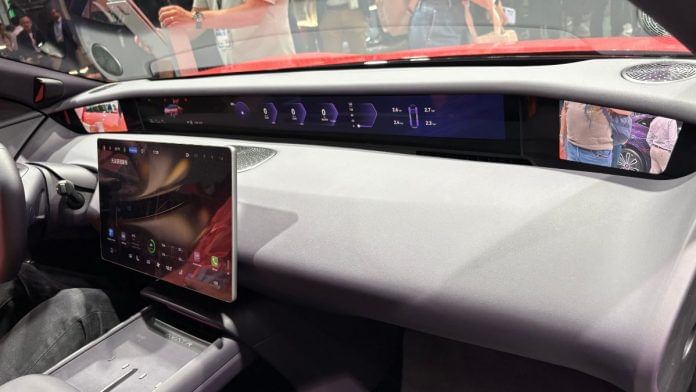The pedestrian heart of Munich was converted into a massive display area for carmakers in September. It was the annual event of the German automotive industry, the show now known as IAA Mobility.
The day I visited, German Chancellor Friedrich Merz was walking around the show. And if he saw what I saw, he would have been very worried because this was hardly a celebration of the German auto industry. While Audi, BMW and Mercedes-Benz did launch their latest products at the show and there was currywurst at the food stalls. It genuinely felt like I was in Shenzhen or Tianjin rather than Munich.
You walk in and see Chinese product after Chinese product, many from brands that you might never have heard of. There was Aito, AVATR, Deepal, Forthing and even XPENG, a carmaker whom I wrote about a few months ago. These were alongside the usual suspects like BYD and Leapmotor. These state-of-the-art products were packed with tech such as commercial applications of Light Detection and Ranging (LiDAR) for automated driving. LiDAR is essentially an evolved form of radar technology using lasers instead of radio waves.
China has weaponised its access to rare-earth metals, but in Munich, it became clear that the country is also weaponising its control of the automotive industry, especially as the industry undergoes a tectonic shift toward electric vehicles.
Learning from the Chinese
It wasn’t just the cars, it was everything that went into these cars. One of the biggest stalls was for Contemporary Amperex Technology Co., Limited (CATL), the Chinese industrial giant and the world’s largest Lithium cell manufacturer. But they’re not just making the batteries; they are leading in the development of cell technology, and they are developing intellectual property. CATL is large, but there were tens of other Chinese companies that are leaders in making electric motors, new types or display technology even for tyres and automotive glass.
For years, the German automotive industry in particular has grown fat on profits from the Chinese market. China accounted for anywhere from a third to half the sales for German luxury carmakers. Over the past couple of years, though, sales have been crashing, in fact in the third quarter of 2025, Mercedes-Benz saw sales in China fall by 27 per cent, and it is a similar story for Audi and BMW (and even Tata Motors-owned JLR).
The Chinese car consumer is seeing through the coveted ‘brand value’ of these Western carmakers. Germany is rightly proud of being the country that invented the motor vehicle as well as its heritage in the development of automobiles. Their expertise was in engineering drivetrains, but as the world went electric, helped along with mandates from European governments, including Germany’s own, China just ran ahead.
Once upon a time, Chinese carmakers learned manufacturing from the Germans and Chinese consumers loved German cars. When I went to Shanghai in the mid-2000s, thousands of Volkswagen Santanas roamed the streets as taxis and high-level Chinese officials moved around in Audi’s. Today, the Germans are learning from the Chinese, not just by making ‘Made For China’ products, but actually taking Chinese platforms and technology as well as creating all-new brands.
This shift is best typified by Audi, which has launched a new brand, imaginatively named ‘AUDI’, for the Chinese market. Its first model, the E5, is built on technology from SAIC, a company familiar to India as the owner of the MG brand. Volkswagen, meanwhile, has dumped its in-house software development and platform to collaborate with XPENG. And it isn’t just the Germans; even Toyota, one of the most conservative carmakers in the world, has developed a ‘Made for China’ electric vehicle using technology from Huawei.
Also read: Mercedes G-Wagon is now India’s billionaire toy
While sales for German carmakers are rocketing up in India, things are relative. BMW and Mercedes-Benz both announced stellar sales in the July-September period, especially after the cut in GST, they are still minuscule, a tiny fraction of Chinese sales despite the decline. Take Mercedes-Benz India, which sold a record 5,119 units in the July-September quarter. A tiny fraction of the 4,41,500 vehicles they sold globally in the same period, of which China accounted for 1,25,100 cars.
The German auto industry is in a world of trouble, and frankly, they only have themselves to blame.
Kushan Mitra is an automotive journalist based in New Delhi. He tweets @kushanmitra. Views are personal.







Meanwhile, India is busy making potholes, unaffordable cars or affordable-unsafe cars, romancing socialism, and alcoholisation of petrol.
There is a double word error in the headline.